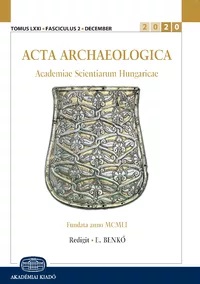Das Gräberfeld des römischen vicus bei Biatorbágy
The burial ground of the Roman vicus near Biatorbágy
Author(s): Katalin OttományiSubject(s): Archaeology
Published by: Akadémiai Kiadó
Keywords: Roman burials; costume; late Roman pottery; vicus; Biatorbágy
Summary/Abstract: Near Biatorbágy, along the northern side of Road 100, Éva Maróti, archaeologist of the Ferenczy Museum of Szentendre, excavated a part of a cemetery in 2004. 36 early and late Roman graves were found with Avar Period burials mixed in between. The cemetery was used from the second half of the first century to the end of the fourth one. An early Roman horse burial and several undamaged bronze vessels are among the most significant finds. The cemetery begins with three indigenous skeletal burials followed by four cremation ones from the 2nd and 3rd centuries and 27 skeletal burials appearing in the second half of the 3rd century. The richer part of the 4th-century population was buried in stone or brick walled graves. Most grave goods were in the stone walled graves. Glazed jugs and female jewellery must be highlighted amongst these grave goods. The cemetery most likely belonged to the Roman settlement excavated on the border of Biatorbágy and Törökbálint being inhabited for several centuries. The burials fit in with the cemeteries of the vici (Budaörs, Biatorbágy, Páty) in the southwestern area of Aquincum.
Journal: Acta Archaeologica Academiae Scientiarum Hungaricae
- Issue Year: 74/2023
- Issue No: 2
- Page Range: 265-329
- Page Count: 65
- Language: German
- Content File-PDF

